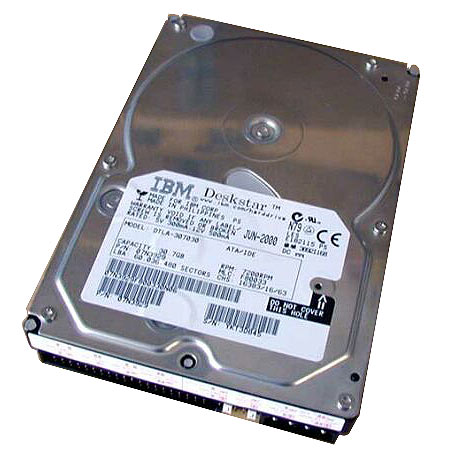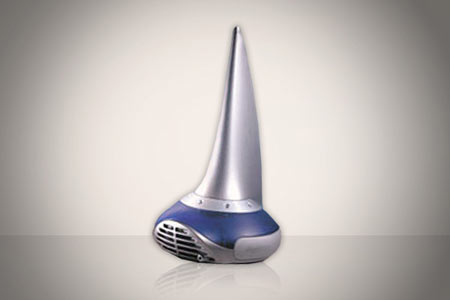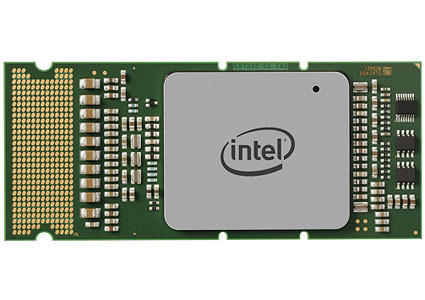In Pictures: 16 Of The PC Industry's Most Epic Failures
We've endured a great many annoyances in the 16 years since Tom's Hardware first appeared online. What follows is a list of 16 of them. Although it's by no means all-inclusive, it represents one seasoned reviewer's worst experiences in technology.
Sometimes The Glass Is Half Empty
Every industry has its ups and downs, and the history of personal computers is littered with both. Rather than hitting you with another list of favorites, we thought we'd mix things up with some of the most prolific lows, botched products, and major irritations that we've endured over the past decade-plus. Some of the best ideas came from our readers. Others are the personal pet peeves of a long-time reviewer. So please, indulge one man's therapeutic rants as as we reminisce about some of the PC industry's most notable failures.
Driver Abandonment In Every New OS
My Epson Perfection 1250 scanner won't work in Windows 7 64-bit. Oh, the irony. And neither will my Konica Minolta PagePro 1370W laser printer. Both are perfectly capable USB-based devices in great working order, completely abandoned by their manufacturers for no reason other than to force me to buy new peripherals. And we know this problem isn't just limited to two vendors or just printers and scanners.
Anyone who's ever experienced this nightmare when adopting a new operating environment knows what I'm talking about. And we're about to find out how the same manufacturers handle Windows 8. To the vendors who don't support perfectly good, modern products through multiple operating system iterations: there's a special place in hell just for you.
The Iomega Zip Drive (1994)
Back in the days of 1.44 MB floppy disks, the proposition of 100, 250, or 750 MB removable media was enough to make this writer drool. And while some folks reported excellent reliability, I was one of the unlucky users who experienced the infamous click of death, a sound associated with malfunctions and, ultimately, catastrophic data loss (Ed.: If it makes you feel any better, Don, I experienced this too).
In September of 1998, a class action suit was launched against Iomega because of this problem. But if you want a more telling smoking gun, the writable compact disc probably killed that company's business model more than any lawsuit.
Rambus RDRAM Memory (1999)
In the late 1990s, it seemed like a foregone conclusion that Rambus' RDRAM technology would supplant SDRAM as the standard memory type used in the PC. It was able to deliver twice the bandwidth of SDRAM at the same frequency. Intel had so much faith in it that the Pentium 4's first platform, based on the 850 chipset, exclusively supported RDRAM. So, what went wrong?
The technology failed to overcome several issues: high latency, increased heat, and a more premium price tag. The relatively loose latency numbers often mitigated the bandwidth advantages Rambus' memory held over SDRAM, and the company's proprietary standard included licensing fees that added cost (this wasn't helped by larger, more expensive to manufacture ICs). In addition, RDRAM had to be installed in pairs to properly populate dual-channel motherboards, increasing the pain of an upgrade. When faster DDR SDRAM became available and Intel added support, the chatter about RDRAM died off. Nowadays the company is most notable for its lawsuits against former competitors.
Get Tom's Hardware's best news and in-depth reviews, straight to your inbox.
IBM Deskstar 75GXP Hard Disk (2000)
When your product earns the nickname Deathstar, you're doing something wrong.
The IBM Deskstar 75GXP was particularly unreliable, and while the company never expressly admitted responsibility for selling a sub-par piece of hardware, it agreed to pay $100 to every owner whose drive failed in order to resolve a class action settlement.
Intel's Pentium 4 Based On Willamette (2000)
The first Pentium 4 that Intel released was expensive, power-hungry, hot, and yoked to Rambus' memory technology. All of that might have been forgiven if it was a significantly faster piece of hardware. However, the first 1.4 and 1.5 GHz Willamette-based Pentium 4s were often outperformed by the fastest Pentium IIIs available at the time.
It took a number of architectural updates and manufacturing advancements for NetBurst to compete more aggressively with competing processor models. But even then, the Pentium 4 was always a very hot, power-hungry line-up. In fact, when the Prescott-based design hit a ceiling at 3.8 GHz, the company realized it'd never see the 10 GHz clock rates it told us to anticipate. At that point, it shifted focus to its Core architecture.
DigiScents iSmell (2001)
In 1960, a technology called Smell-O-Vision made its only appearance in a feature film called Scent of Mystery. There is a good reason that it was never used in a movie after that. But this point was lost on DigiScents, the company that pioneered the iSmell peripheral for the PC in 2001. It went nowhere, of course.
Believe it or not, some company tries to take the reigns with this idea every few years. And while we're picking on the iSmell specifically, we don't see any other company enjoying success with mass-marketed olfactory stimulation devices for PCs either (don't get any ideas, adult industry).
While I was doing research for this piece, I came across a forum comment from a user named Dede who summed it up best. "I think this is a bad idea." I'm not sure there's much more that needs to be said.
Intel Itanium CPU (2001)
At the turn of the millennium, Intel's 64-bit Itanium CPU was supposed to be the next big thing, and Intel hoped that its IA-64 architecture would supplant x86. Unfortunately, its performance emulating x86-based applications was particularly dismal. The design's issues compounded when AMD introduced its own approach to 64-bit computing, which added extensions to to the x86 instruction set.
Eventually, Intel was forced to adopt x86-64 in its Pentium 4 processors, as Itanium was relegated to the enterprise server space. Intel deserves credit for continuing development with a full product roadmap, even today. However, Microsoft announced that it won't support the architecture in its next-gen operating systems, and Oracle followed suit last year.
IDE-To-SATA Converters (2002)
At first glance, the IDE-to-SATA converter is a great idea if you're upgrading to a platform that doesn't support your older IDE-based devices. Unfortunately, these devices aren't known for their compelling compatibility. Rather, the hassles caused by this cure are often worse than the original problem.
Yes, you might get lucky, set your drive to cable select mode, and see everything work beautifully. In our experience, though, even if you get an old drive working, it's just as likely to drop off the next time you reboot. Our advice is to get a new SATA optical drive. If you really want to keep a drive with an IDE interface, find a motherboard that supports it natively. They're still out there, after all.
Nvidia GeForce FX 5800 (2003)
After ATI released its mighty Radeon 9700 Pro, everyone waited for Nvidia to strike a vicious counterattack with the GeForce FX 5800.
Instead of a 9700 Pro-killer, though, the company introduced a card that was so loud, it came to be known as the DustBuster, borrowing from a little Black and Decker nomenclature. It didn't help that the first DirectX 9-capable GeForce board offered poor performance in applications written to utilize that API. The GeForce FX 5900 Ultra that replaced it was better, but still couldn't compete against ATI's best effort when it came to advanced pixel shader operations. Nvidia didn't make a concerted comeback until the GeForce 6800 arrived.
Intel Heat Sink Pushpins (2004-Present)
Intel might have the fastest CPUs you can buy, but we're looking forward to the day when the boxed heat sink fastening mechanism that debuted alongside LGA 775 is replaced with something sturdier. Unlike AMD's simple-yet-reliable hook and latch system, Intel's plastic pushpin design is quite easy to break if you're not careful during the installation process. And given the number of processors that get tested around here, you can bet we've broken our fair share.
Don Woligroski was a former senior hardware editor for Tom's Hardware. He has covered a wide range of PC hardware topics, including CPUs, GPUs, system building, and emerging technologies.
-
runswindows95 I find it funny that two technologies (RDRAM and the first P4) that launched together are on this list. Overall, I agree with everything on the list.Reply -
face-plants I still have Rambus memory and those darn blank 'continuity modules' laying around that I should have never bought for inventory. I hated the first gen Pentium 4's and wish I had skipped them completely with my system builds at the time.Reply
Also, amen to the comments about Intel's boxed Heatsink/Fan HSF. Not only were those two clear plastic halves of the pin extremely easy to split apart but, some mainboards required me to push entirely way tooo hard before hearing the "click" of the black clip finally seating properly. I still have pictures of a few Intel boxed boards that were so incredibly warped by the force of the HSF retaining clips that they caused internal damage to the boards (opened traces or something) and were never able to POST properly. I believe that mess ended with Intel cross-shipping at least a dozen new mainboards and my store just eating the cost of some after-market Zalman coolers to get the builds out on time. From then on, I only used the boxed coolers for replacement parts and simple bench-testing until the design improved a little bit years later. They're solution is still far worse than AMD's IMO though. -
ta152h Some of these weren't great, but probably don't deserve to be on this list.Reply
RDRAM failed, not because of RDRAM, but because of the Pentium III. Which brings us to the Willamette too. The Williamette reached 2 GHz on the same process technology that the Pentium III/Coppermine reached 1.1 GHz, and outperformed it EASILY at virtually everything at that clock speed, and even when introduced at 1.5 GHz (compared to 1 GHz Pentium III) beat it in virtually all benchmarks. Why? A good part of it was the performance of RDRAM, which finally was attached to a processor that could use the bandwidth. The bad was the x87 was greatly weakened so developers would use SSE 2, which was very powerful and considerably better. I guess that's a plus and a minus.
Ironically, RDRAM died just when it was finally better than the competition. The price had finally come down to the price of other memory, and the performance was better for the Pentium 4 than DDR. But, when they released it for the Pentium III, which couldn't use the bandwidth (although even then, the i840 had very good performance by using interleaving to reduce latency), the performance was bad because of the processor. The cost was excessive too, although it was wrong attributed to royalty payments.
While the Willamette wasn't a great processor, the really bad one in the Pentium 4 line was Prescott. I think most people would pick that one as the worst.
Others might be all the Super 7 chipsets. The 386 kind of sucked (added a lot, but the performance wasn't that great). The K5 was a big headache, being very late, lacking MMX (which was a selling point by the time it came out, due to be late) and stuck at 116.7 MHz. AMD 486/DX2 80 MHz had that nasty tendency to have the internal cache go bad. i820 really sucked, being late, using the wrong memory (RDRAM) for the processor, and then having bugs with the MTH. Worse than that, for only a little more, the i840 had much better performance, and more features. Cyrix should have been known as Cryix, because you would if you bought one. The headaches those things caused ... -
I wouldn't call the zip drive a failure, epic or otherwise. At one point several major PC vendors shipped with internal zip drives and there was quite a fury to own them. It was perceived as cheap, decent-sized storage that was more cost-effective than hard drives. The problem of course was that the zip drive format was owned by Iomega rather than being vendor-neutral.Reply
-
e56imfg I already know Bulldozer and Vista are going to be here without even going through the articles. Now to go to the next page...Reply










